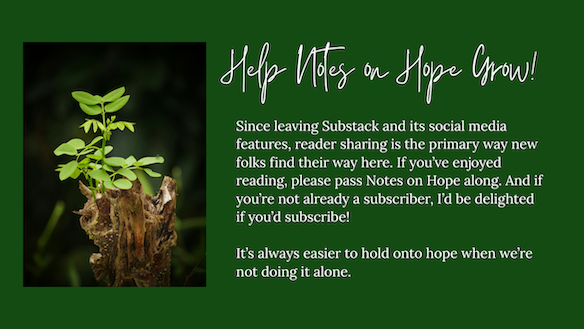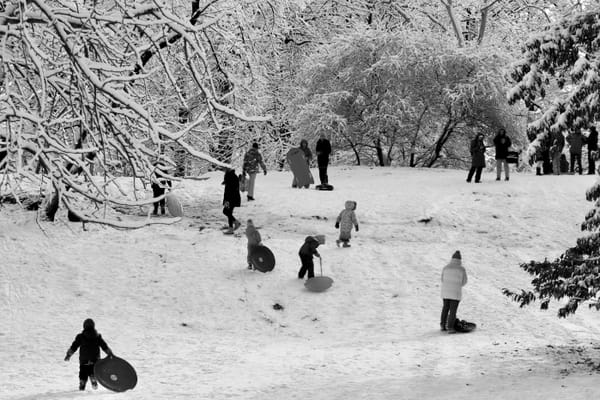The Power of Joyful Defiant Absurdity
Learning about resistance from children
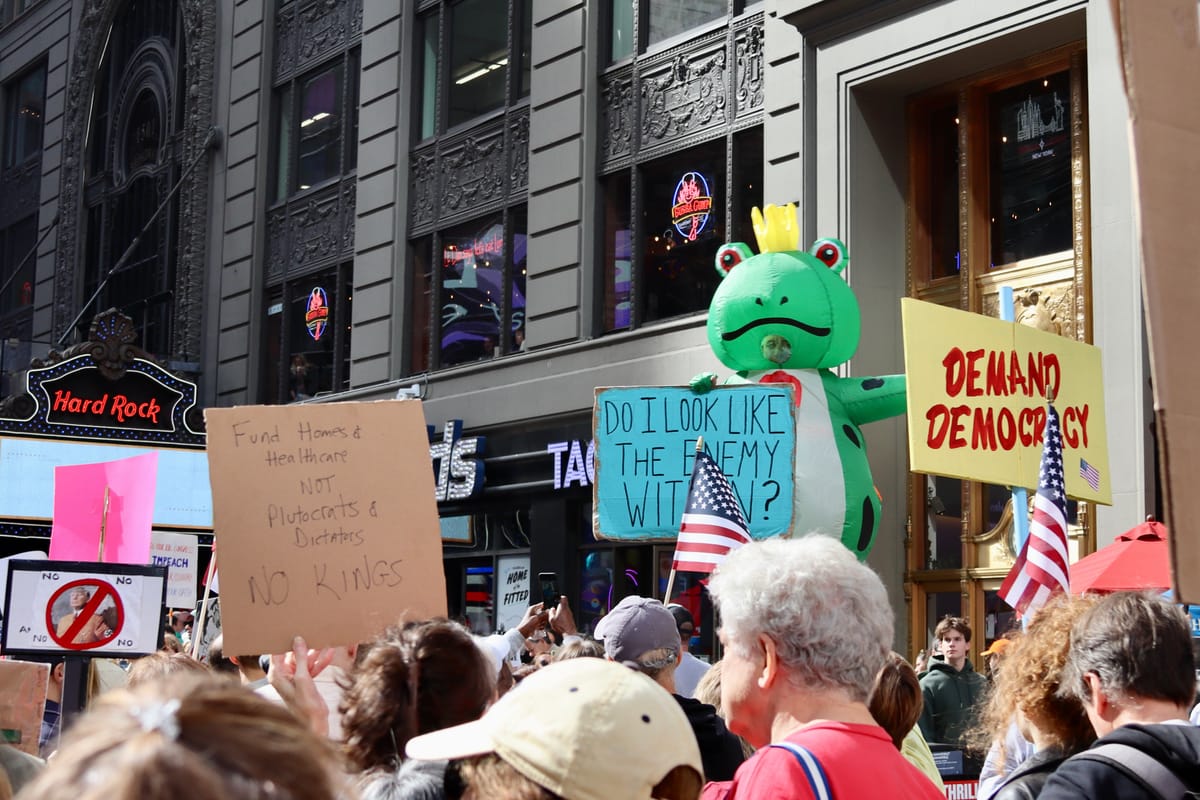
Fairy Tale
There was a time
(please, God, not that long ago),
I wanted to run away
and join the circus.
It seemed realistic:
the clowns would feed me,
I would get to know the sky
in different places,
and the lions would understand
that I was on their side.
~Dorothea Grossman
Every teacher knows—and probably, if they’re honest, dreads at least a little—the moment when children coalesce in a unified chorus of defiance: when one child stomping their feet at circle time, pounding on the table before snack, running gleefully in a circle when they’re meant to be sitting, or chanting some seemingly nonsensical phrase, suddenly becomes an exuberant, group experience. These moments are exhilarating for children, both because they harness the power of the group to counter the singular authority of the teacher and because they are usually rooted in an initial gesture of silliness or absurdity, which carries its own contagious pleasure.
In the majority of their day-to-day life, children are rarely in a position of power. With the exception of carefully doled out periods of free play or recess, which are increasingly limited and almost always highly supervised, they spend most of their time being directed and corralled. And yet, despite their lack of autonomy and authority, one of the great tools children possess for momentarily gaining the upper hand is their comfort with being perceived as ridiculous. Children are not only more at ease with this perception than adults, they often relish the pure pleasure of the nonsensical, making it particularly easy for children to use silliness to whip up rebellious collective participation among their peers.
If you’ve ever been perplexed as an adult by children chanting “skibidi” for seemingly no reason or, more recently, “six-seven,” then you’ve been witness to this developmental phenomenon—collective absurdism as joyful social power. I remember a particularly amusing year in my own classroom when the catch phrase was “chicken bucket,” which seemed most effective and fun when chanted while jumping up and down, wearing a sand bucket as a hat. The nonsense is both the point and the power.
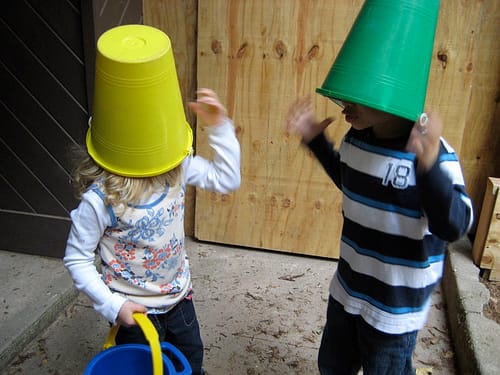
Much has been written in the education literature about how teachers ought to understand and respond to these moments of—as Joseph Tobin has called them, borrowing from philosopher Mikhail Bakhtin—“carnivalesque” rebellion in the classroom. How a teacher interprets the role of their authority in these moments of giddy resistance among children is deeply intertwined with their perspective on the larger purpose of education. If education is to be viewed merely as a training ground for future employment, as it so often is today, then it is natural that the response would be for the teacher to reassert their authority quickly and regain control over the hierarchy embedded in the adult-child relationship and in many school structures. If, on the other hand, education is viewed as the origin point for democratic citizenship, as John Dewey asserted, then these moments become more complex. The thrill of rebellion, viewed through the lens of participatory citizenship, is an early moment of practice in political mobilization and self-determination. As educator, Steven Schultz wrote,
“If we are to make any comparisons between adult and preschool acts of resistance, we must look at the issue of empowering the lives of our children not only from the standpoint of the ways in which teachers give self-direction to them, but also in the ways in which children take it for themselves. The simple fact is that many children (and certainly those who number among the many disenfranchised groups) will need to use lessons in learning how to take those rights that are not being freely offered as they enter the adult world. It is in this sense, in an unequal world, that these acts of resistance are more precise sources of empowerment. And perhaps the importance of seeing these connections demands a little stretching.”
Those in positions of political power understand the role these dynamics of learned authority and resistance play in education, even in the earliest years, regardless of how we as teachers or parents may view the deeper purpose of education. This is why authoritarian structures tend to insist on classrooms that replicate these power dynamics, acclimating children to obedience. And, as is most evident today, this is why political power so often begins to entrench itself by controlling schools and children’s access to any sort of freedom in the classroom—even the freedom to be exposed to books and to make choices about what they will read. This is also why it matters a great deal when educators and education systems stand up against attempts to regulate what can be read and taught in classrooms and when they defend children’s right to express their individual voice and identity in school.
This is a critical time in history for teachers to defend the classroom as a sight for practicing democratic participation. Our children deserve to have a thorough understanding of the liberties that are currently being stripped away from them and of the mechanisms within their reach for fighting to retain and expand their rights instead. Their future freedom will depend on their grasp of these dynamics and on our willingness to protect their access to the educational experiences that illuminate such knowledge within their classrooms today. Though, if the contrast between the courage and integrity of student newspapers and the meekness of much of mainstream media is an indicator, I think the kids understand the stakes well.
At the moment, though, what I’m most struck by is a reverse dichotomy—not what children have to learn about power, freedom, and resistance from the classroom per se, but also what we as adults can learn from the joyful tactics of resistance that children so often employ.
A few weeks ago, I wrote about the power of whimsy as a source of pleasure, community cohesion, and, yes, resistance. Since then whimsy has taken hold of the zeitgeist in a big way. While I did not anticipate that a guy in an inflatable frog suit would become a central symbol and mobilizing force for political resistance, it makes perfect sense that he has. The contrast between something as silly, nonthreatening, and childlike as a giant inflatable frog and the lethal potential of agents armed with riot gear is powerful. It presents a clear visual picture of the disproportionate nature of the confrontation and instantly orients the viewer toward the true source of danger and threat.
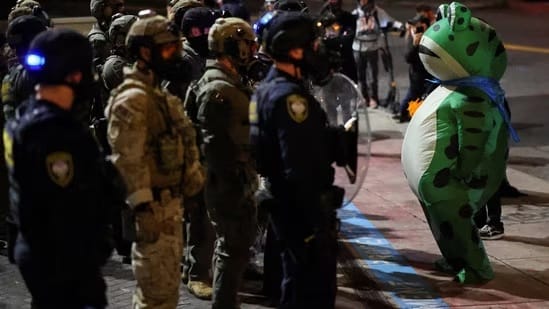
As a teacher, I can’t help but also see a link between the childlike nature of this gesture—the use of an undeniably silly, cartoonish animal costume—and the way in which actual children leverage playfulness and even absurdity as a tool of rebellion. There is power in the way such guileless acts accentuate vulnerability, leverage the human draw toward fun and pleasure, and quickly recruit the support of a crowd. As children know, goofy, obvious fun is uniquely effective at drawing others into a game. Resistance, even against profoundly frightening authority figures, is also made less frightening by the emboldening feeling of being part of a group and by the sheer pleasure of doing something that may be genuinely brave but is also inherently joyous and laughable.
Just as one child’s silly and transgressive action can quickly attract the participation of an entire classroom or playground full of peers, it has not been surprising to see inflatable frogs and other similarly innocent and hilarious creatures amass, first in direct support of the original Portland protestor, and soon enough in locations around the country and even the world. Acts of transgressive whimsy are impactful and enticing because joining in humorous, playful actions is fun. Confrontation is often less intimidating to participate in when it is wrapped in delight or absurdity, and this makes it easier to attract support, which in turn breeds more support.
These acts are powerful because they create a more manageable access point for bravery through their lightheartedness and through the collective community spirit that they spark. Others, who may not have felt safe enough to make the first move, begin to feel more protected and more emboldened by the lure of joining a group, rather than standing alone, and by the pleasure in a brave act that also happens to be joyous. Laughter and community both offer relief from anxiety and fear. So, rebellious gestures that are silly and that cultivate group engagement through humor and fun make courage easier to locate and act on.

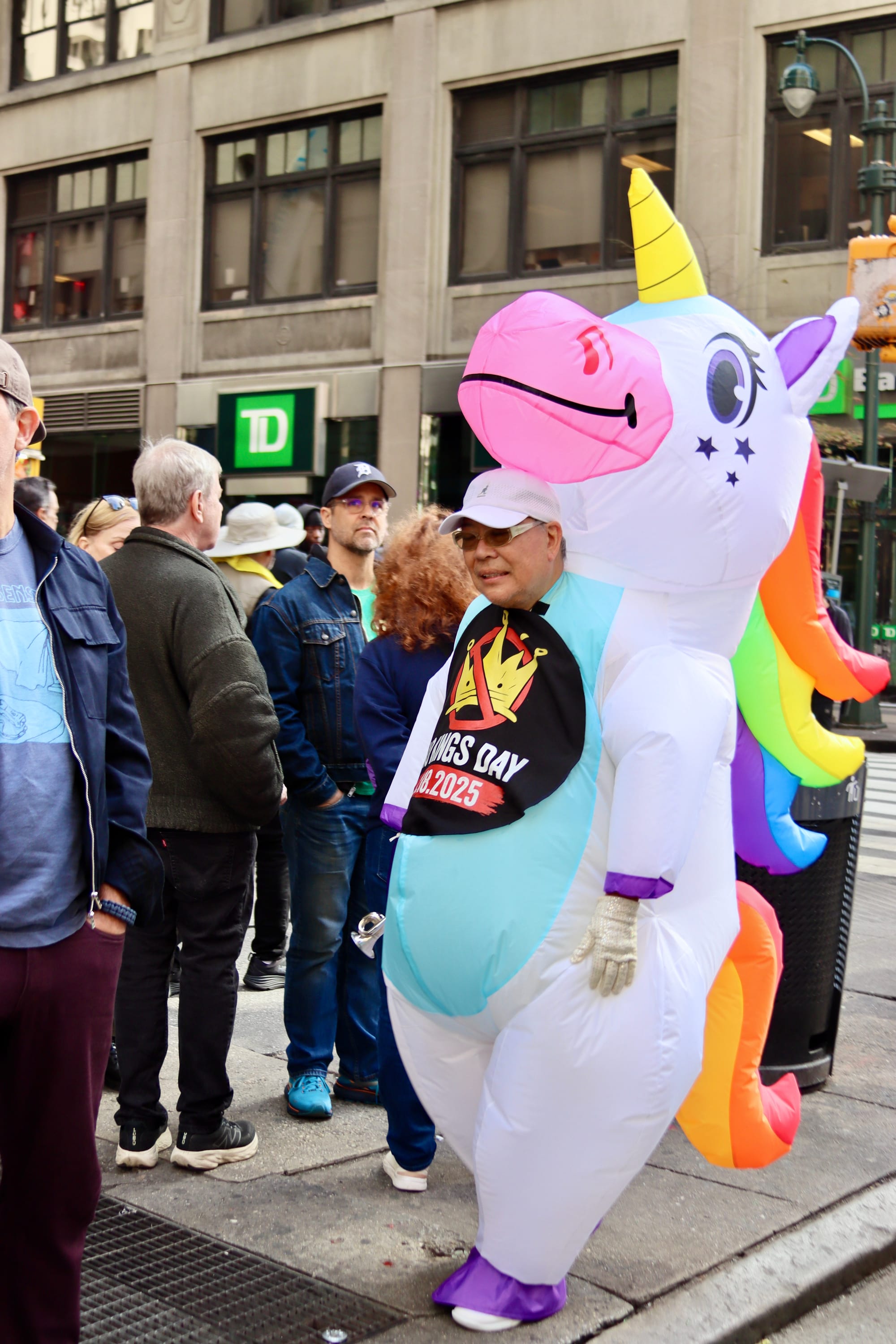

Inflatable duck, unicorn, and dinosaurs at NYC No Kings protest, October 2025
When these moments of collective, often ridiculous rebellion arise among children in the classroom, it is usually very tempting to try to suppress them as quickly as possible. But, as we confront a truly frightening and wide-spread authoritarian moment in history, we may need to not only cultivate this spirit of rebellion when it springs up among children, but also learn from it as we adults figure out how to resist the overreach of power and how to stand up for our freedom and for each other.
Children are, perhaps, the best experts we have on the experience of operating in the world without significant power or self-determination. Their ability to find and expand the cracks in authoritative structures will likely be a critical skillset to cultivate, as they come of age in a time of necessary social resistance to extreme authority.
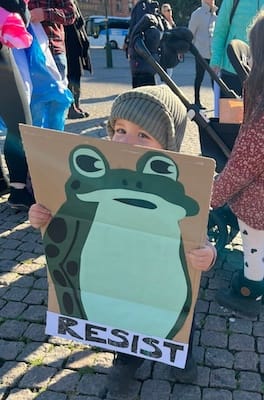
But these natural developmental skills also offer an instruction manual to us as adults. We could all stand to learn from the way children embrace joyful absurdity and understand the pleasure and the power that such absurdity can ignite.
Wishing you the humility, humor, and boldness to nurture the rebellious spirit of children and to take inspiration from that spirit in your own adult life,
Alicia
P.S. Don't forget to check out the Helpful and Hopeful links below.
A few things I found helpful and hopeful this week…
- Resistance Can Be Joyful by Claire Willett
- The Censors Have Names. Use Them. by Stephanie R. Toliver
- Who are you going to believe?: The cynical refrain that nothing matters, or your own big, dumb, beautiful heart by Garrett Bucks
- 'Angels' Step In
- Some welcome guidance for college and university presidents
- To Swallow the Sky by Chloe Hope (this one's just really beautiful)
